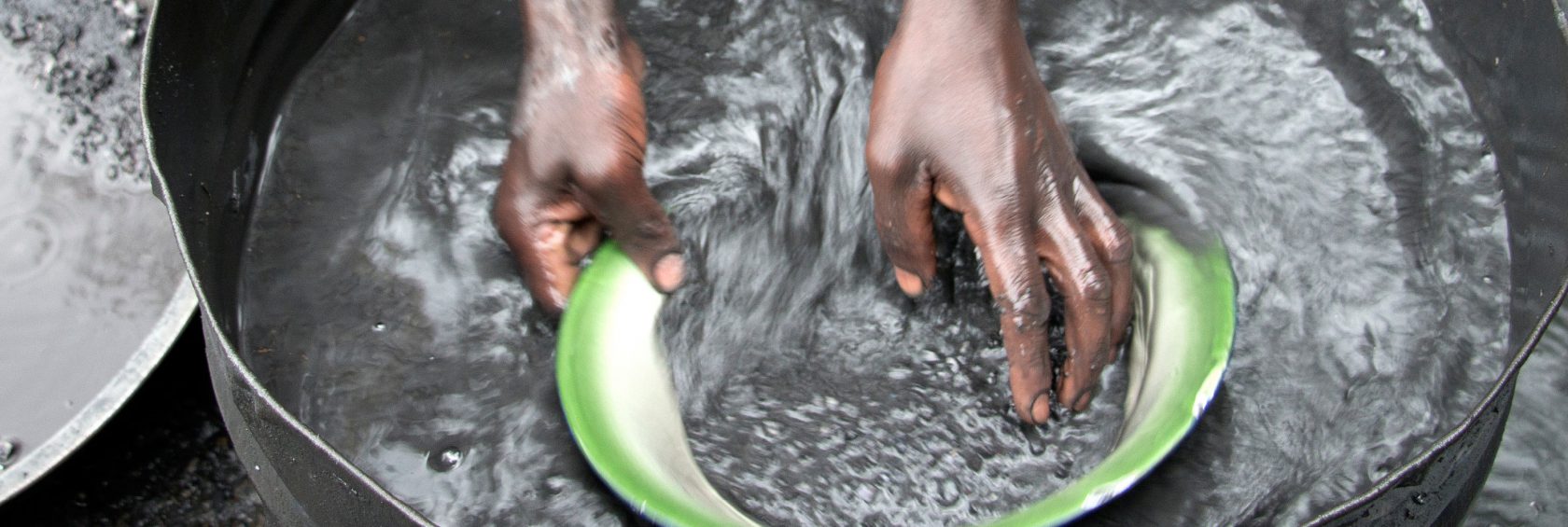Fairer materials – a list of the 10 we’re focusing on
Because we want to change the way products are made, one of our principal aims is to support fair materials and incorporate them into our smartphones. However, mobile phones contain hundreds of different materials, combining more than 40 elements in fact (about one-third of the existing elements in the periodic table) and because it’s impossible to focus on so many resources all at once, we decided we needed to prioritize.
To offer more clarity into the issues surrounding the various materials used in mobile phones and help us decide which to focus on in the years ahead, we worked with The Dragonfly Initiative – a consultancy that helps companies integrate sustainability into their businesses. Together we developed an approach that allowed us to get an overview of the key sustainability issues associated with the different material supply chains in order to understand and identify where our involvement can deliver the greatest impact.
After conflict minerals, what comes next?
Before discussing our materials scoping study, I’d like to take a quick step back. If you’ve been following our story from the beginning, you know that Fairphone started out as a campaign to draw attention to the use of conflict minerals in consumer electronics. So it was only natural that we initially focused on finding better sources of the metals known as 3TG: tin, tantalum, tungsten and gold.
Besides raising awareness, our key reason for focusing on these four minerals first was to support communities where we make a real difference. As a result of Section 1502 of the Dodd-Frank Act, many consumer electronics companies completely stopped sourcing minerals from the Democratic Republic of the Congo (DRC) and surrounding countries, taking income away from areas that were already struggling economically. We wanted to specifically engage with initiatives in these countries to encourage economic development and responsible mining practices where it was most urgently needed.
As a result, over the past three years, we’ve joined existing initiatives to source conflict-free tin and tantalum from the DRC, we’ve collaborated with an Austrian smelter to re-open the tungsten trade in Rwanda and we’ve achieved the very first pilot gold supply chain including Fairtrade certified gold in the electronics industry with assistance from Fairtrade.
The first set of criteria
We worked with The Dragonfly Initiative to develop a set of criteria that would help us prioritize which material supply chains we could engage with. Based on these criteria, they evaluated 38 different materials used in the production of smartphones. The criteria are not exhaustive and certainly don’t include all of the concerns related to the various supply chains, but it’s a starting point for identifying the most significant and persistent issues. We’ve explained some of the criteria below — the rest can be found in our indicator list.
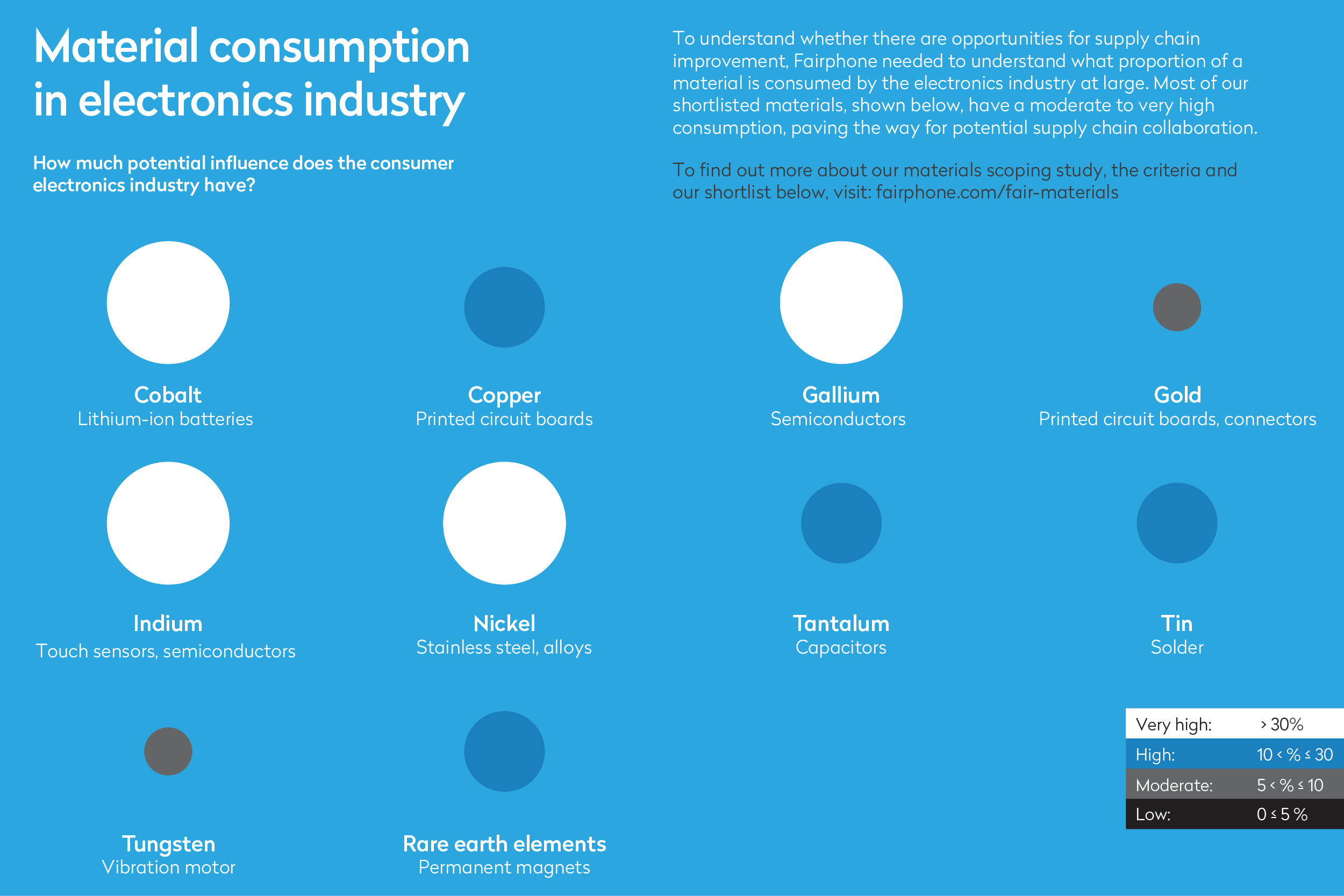
So, what did The Dragonfly Initiative evaluate? They began with a high-level investigation of each material to understand whether it made sense for us to pursue interventions. For example, we wanted to know how much of the material was used by the electronics industry as a whole as well as how much was used in our phones. We also wanted to understand if there were substitutions likely to become available that could offer a more responsible alternative.
Next, we wanted greater insight into the potential for recycling. That meant looking at how quickly the material is being depleted from global reserves, as well as how much is currently being recycled. We also wanted to understand how ‘easy’ it is to extract this material from electronic waste.
We then dove into human rights and environmental risks, starting with the amount of production that comes from artisanal or small-scale mining (ASM). Although much has been done over the last decade to develop responsible frameworks (like Fairtrade or Fairmined!), higher levels of ASM indicate that materials are more vulnerable to issues such as child labor, forced labor and poor working conditions. From an environmental and health perspective, we analyzed a huge range of indicators including water and soil contamination, association with airborne pollutants and toxic chemicals used during processing. If you’re curious to know more, please view the full list of criteria.
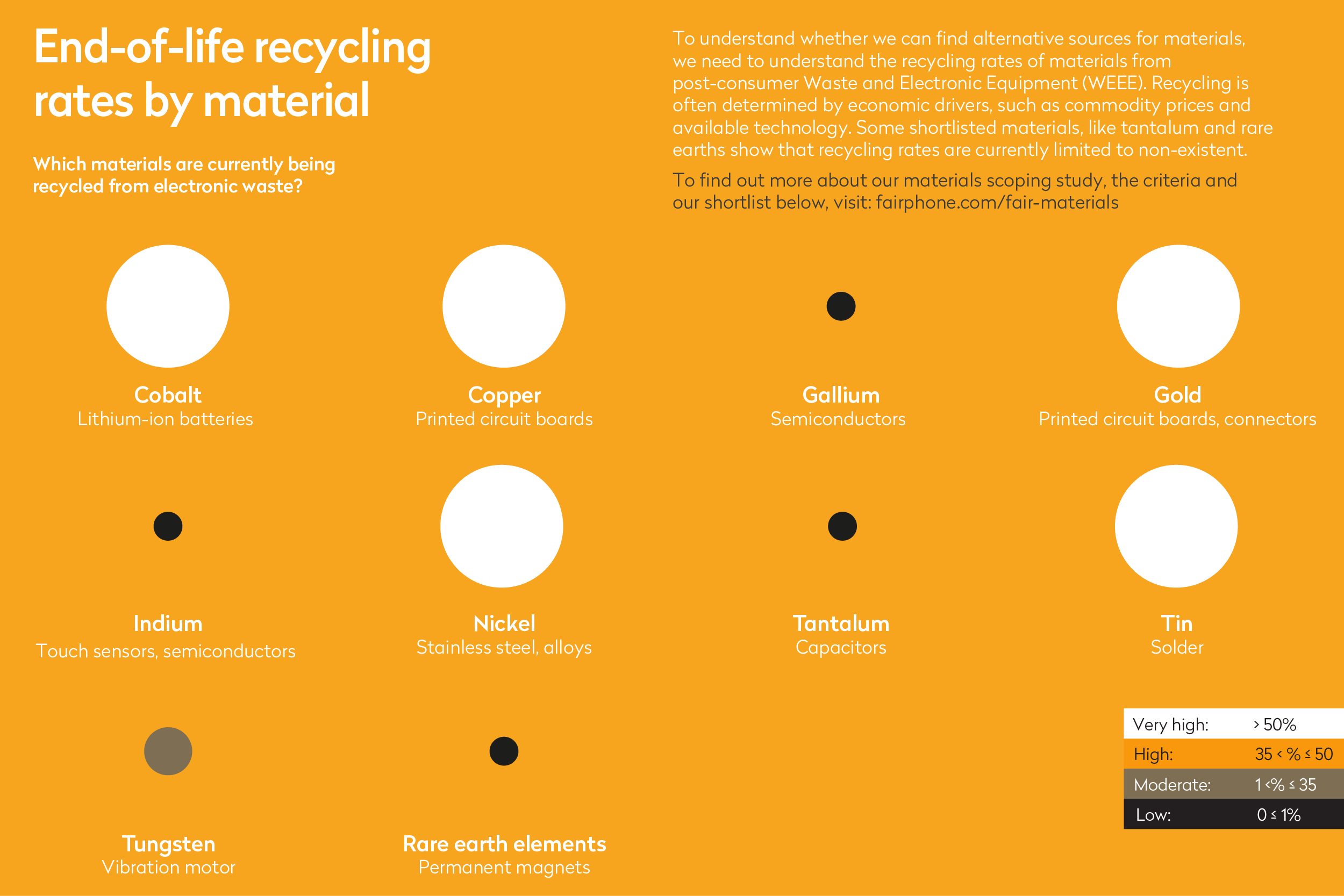
Secondary criteria examines intervention opportunity
So… what does this tell us? It signifies that there is a whole web of supply chains behind the making of each phone, with each of them displaying issues we would like to change. However, in order to have impact, we need to be very selective and prioritize carefully. This is where the second level of analysis relating to intervention opportunities came in. This criteria helped to uncover where we could potentially make the greatest impact.
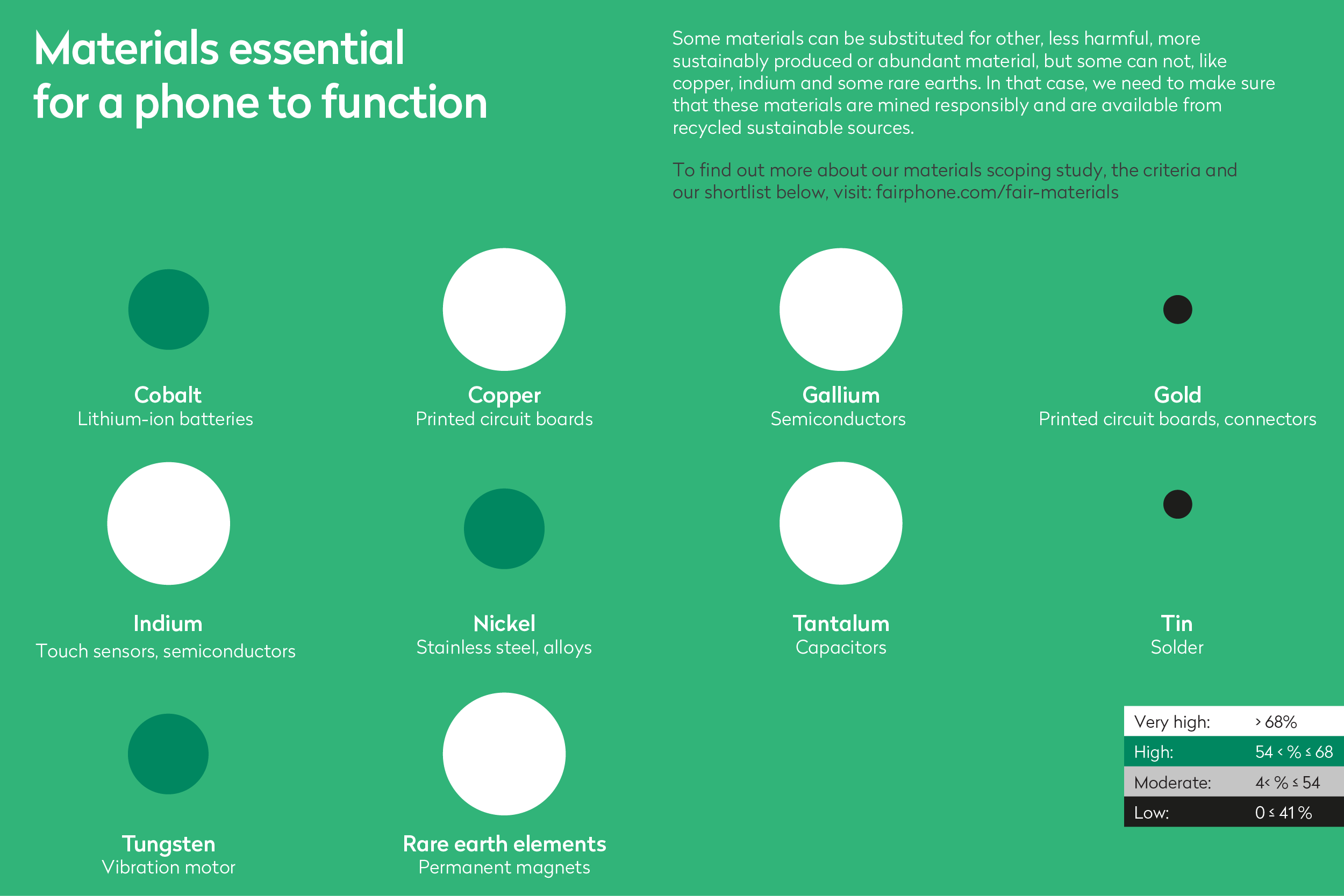
In an upcoming post, we will take a more in-depth look at each of these materials and the countries where these materials are mined, as well as the status of the mining sector and its contribution to the country’s GDP. We will also identify possible opportunities for collaboration, for example by looking at which components and industries were using these materials.
This information gives us a clearer picture of how accessible individual supply chains are, how sustainable and scalable projects might be, and the probability of Fairphone succeeding in making lasting improvements.
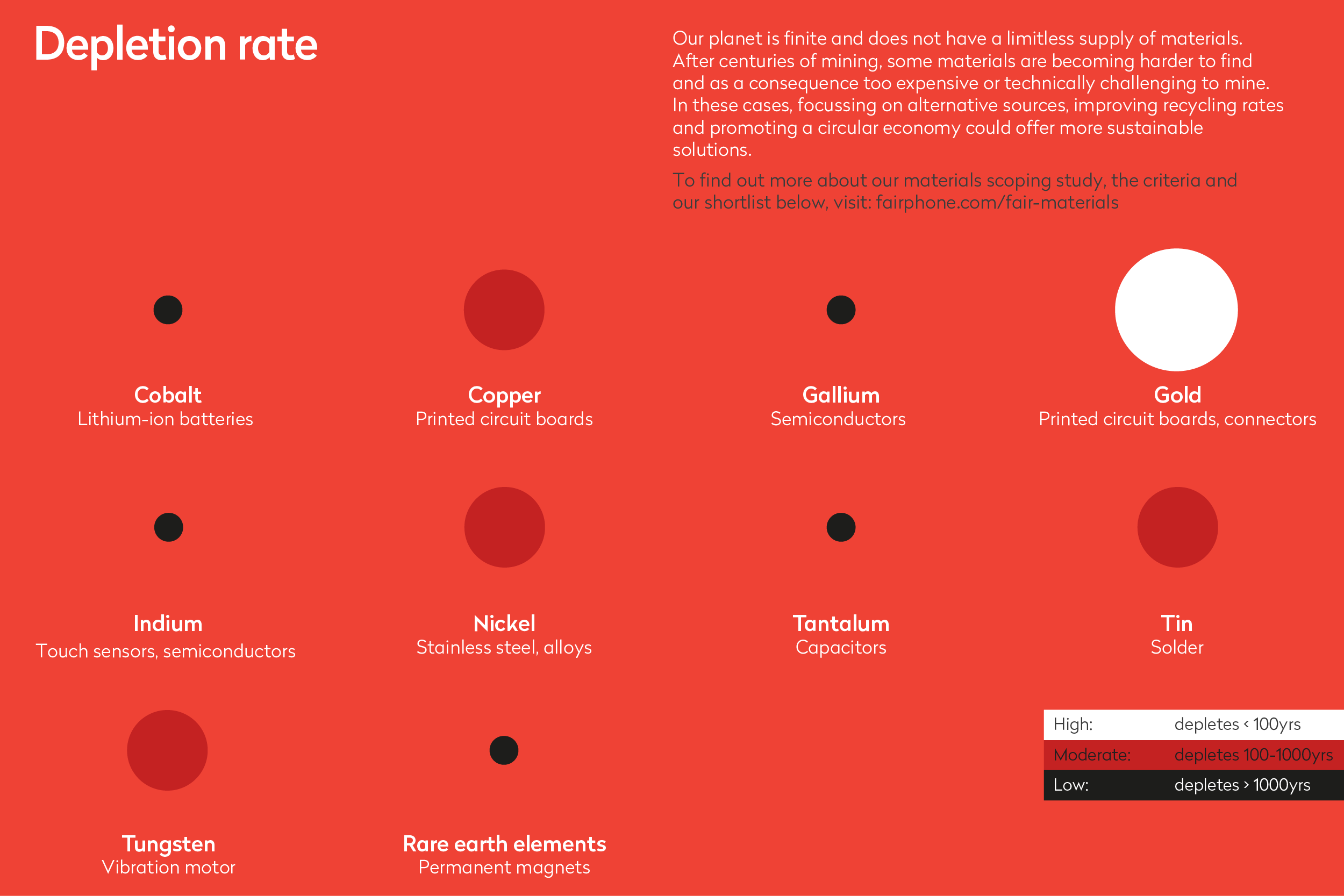
Our shortlist of ten potential materials
The outcome of The Dragonfly Initiative’s methodology was a shortlist of ten materials that we would like to focus on. They are: tin, tantalum, tungsten, gold, cobalt, copper, gallium, indium, nickel, and rare earth metals.
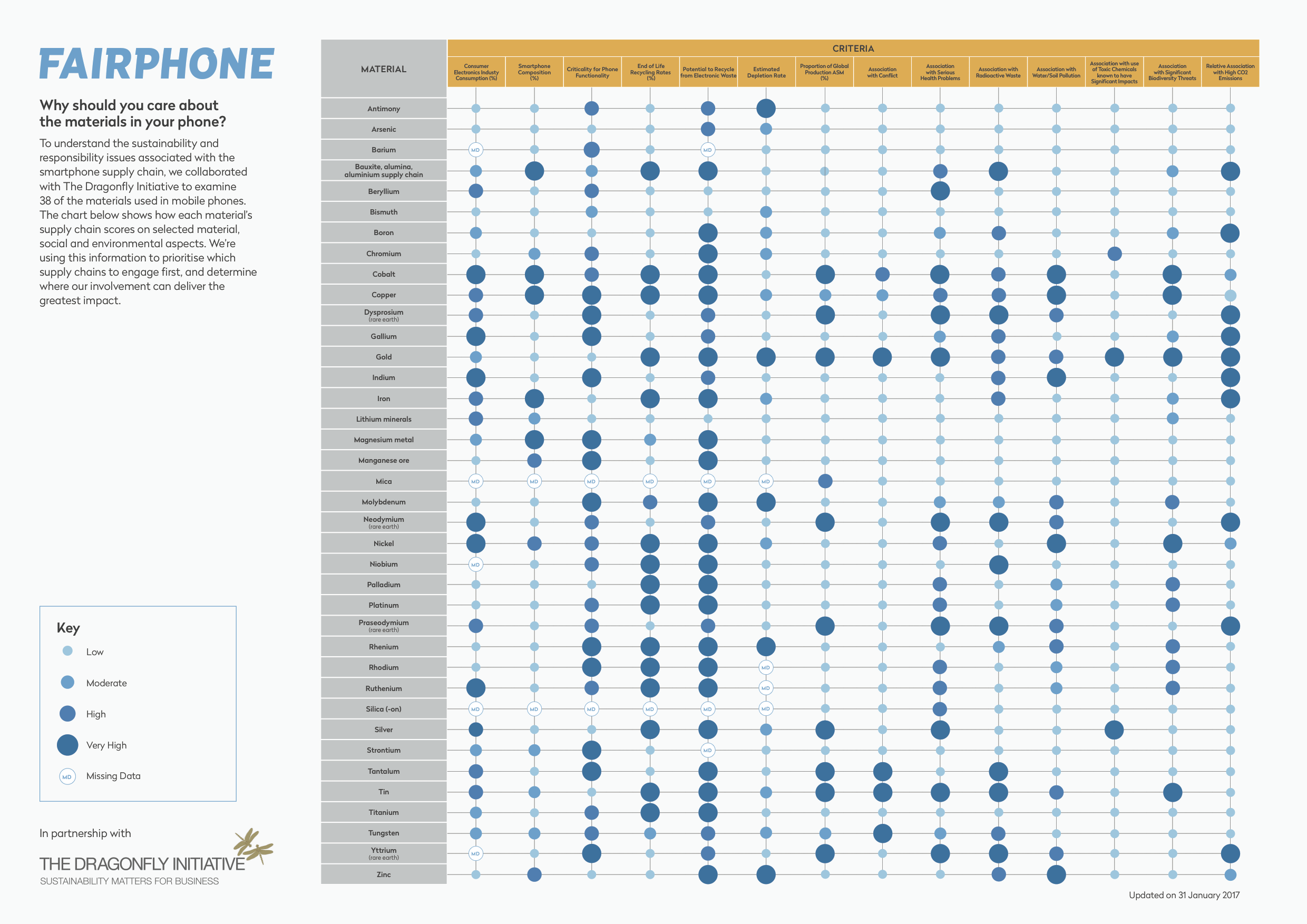
Based on the information we currently have, these materials represent the most compelling combination of significance and risk, combined with the potential for successful interventions and wide-reaching impact. However, realistically, it is unlikely that we’ll be able to improve all of these supply chains. We will continue to consider the options and re-prioritize as different opportunities (or barriers) arise. Our aim is to leverage our small size and reputation to bring together different parties, explore what is possible and selectively focus on the best opportunities for change. This includes taking emerging awareness into account as this creates a momentum. Ideally, this will translate into setting up and/or supporting initiatives the can be scaled up by larger parties.
Soon, we’ll take an in-depth look at each of these materials, where they are found in smartphones and the specific social, environmental and supply chain issues related to each one. In the meantime, we’d like to invite any businesses, NGOs or individuals who are interested in improving these specific material supply chains to get in touch with Fairphone!
